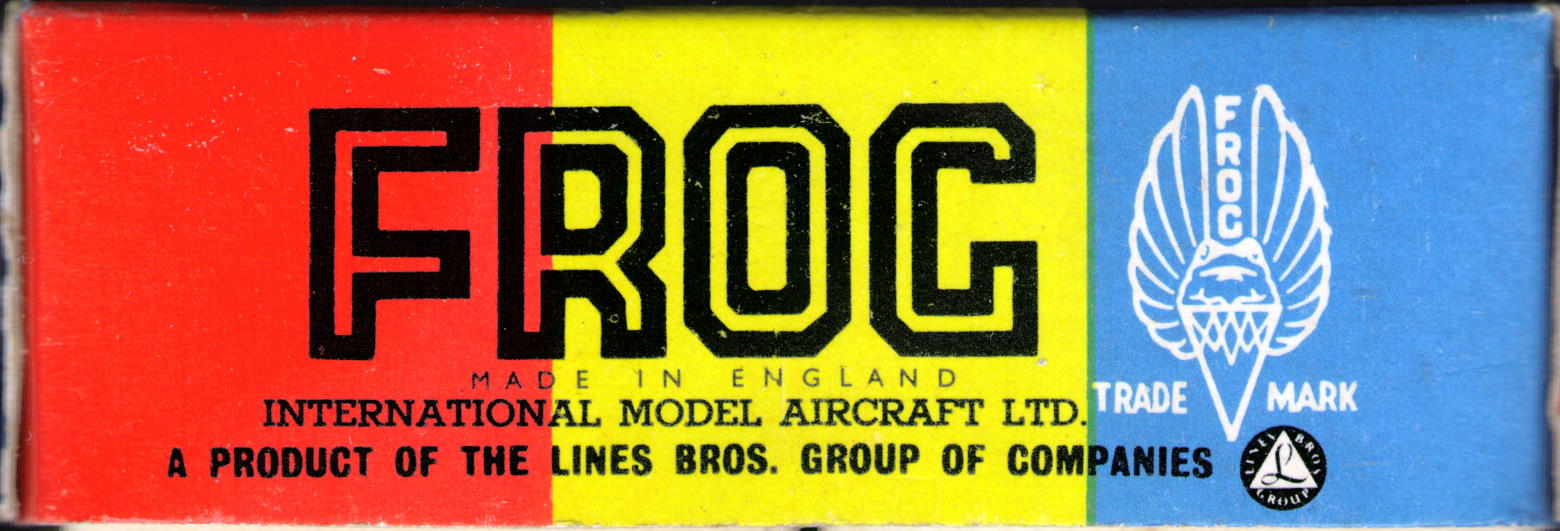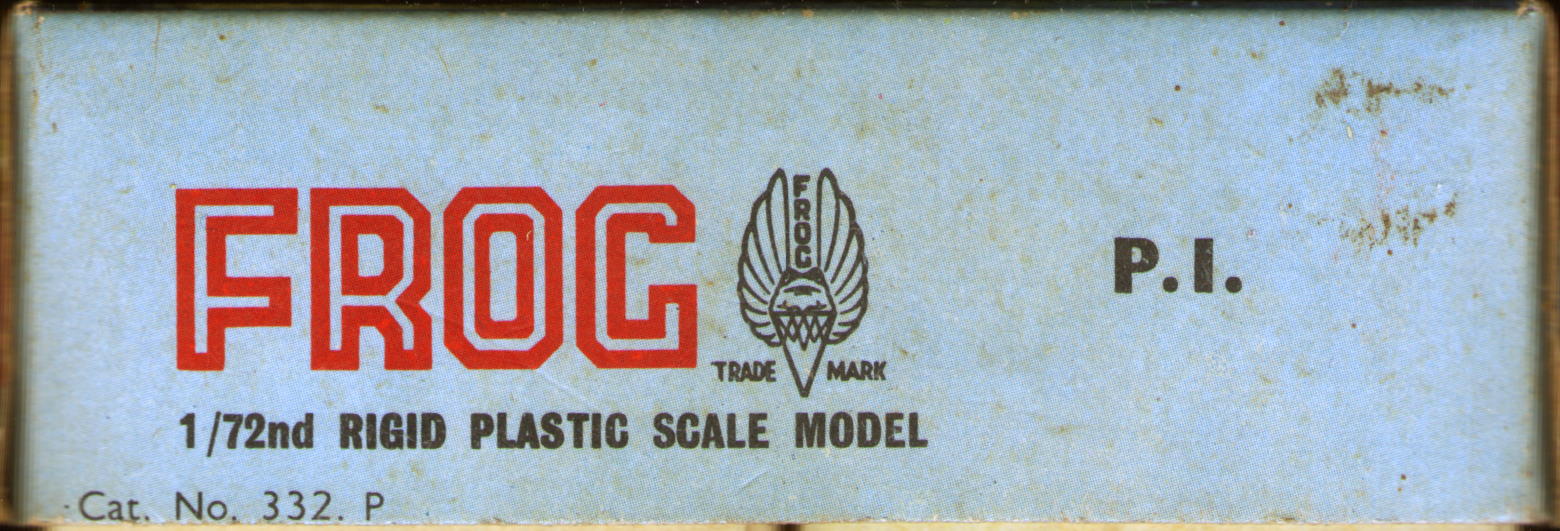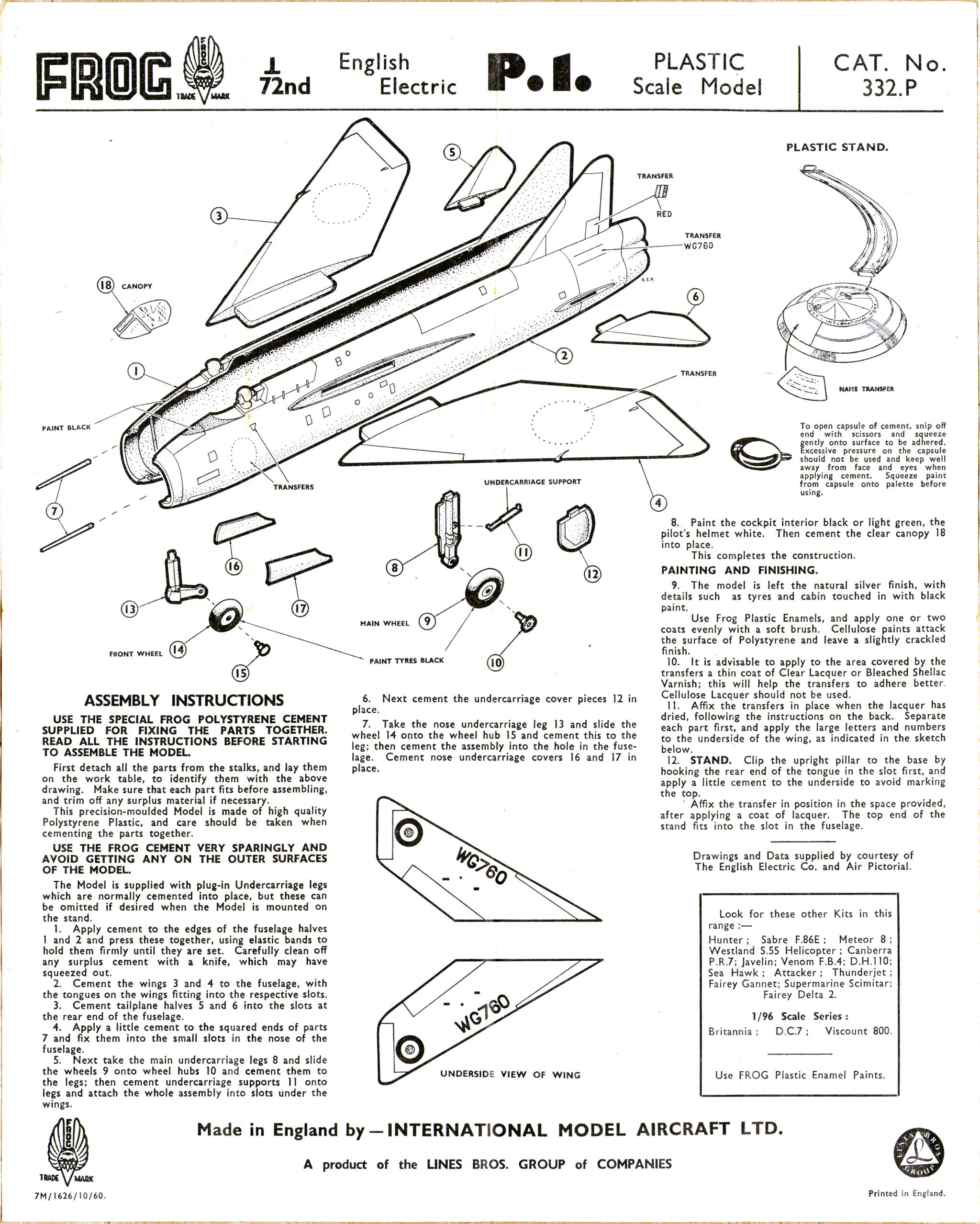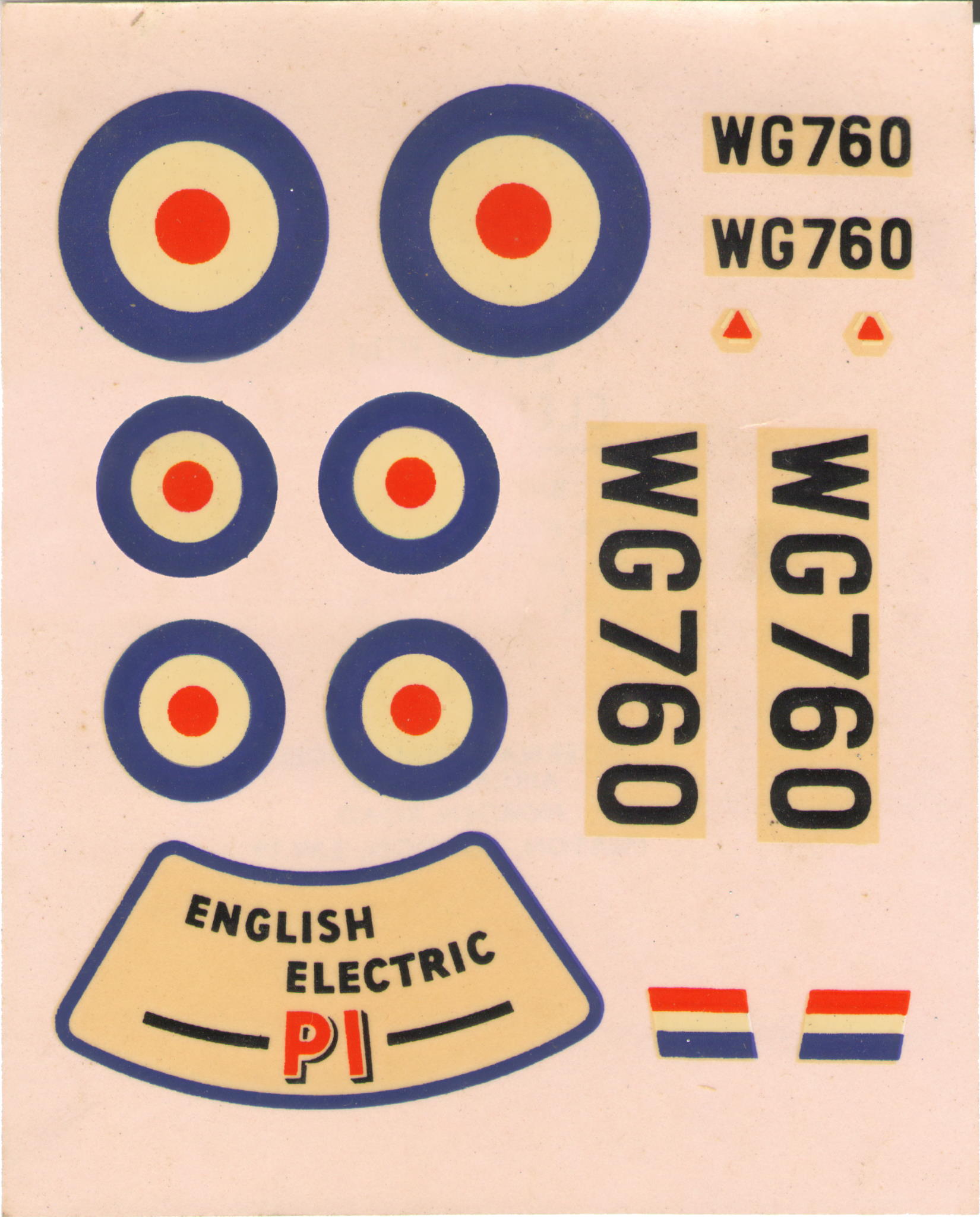




| 332P | 1956-1964 | C1 | } 20000 | 1xRAF |
| F332 | 1964-1965 | C1 | 1xRAF |
"The kit showed the aircraft in its original configuration, before conversion to more Lightning-like appearance"
FROG model aircraft 1932-1976, R. Lines, L. Hellstrom
|
|
Over The Counter
"LATEST addition to the Frog 1/72 scale plastics is the English Electric P.I. in silver-grey polystyrene. The prototype has very thin wings and thus the wings consist of only two panels instead of the usual four. The fuselage and tailplane have half shells, and extremely good fits can be obtained with these components. The undercarriage legs are quite sturdy and incorporate revolving wheels. Detail panels, etc., are formed in the mouldings, making a most realistic model of what is, an exceptionally fine aeroplane."
Model Aircraft September 1957
Trade Notes
"Latest of the Frog plastic models to reach the market are the Fairey Gannet and English Electric P.1A, price 8s. 6d. and 6s. 9d. respectively. Both are right in the top class of plastic moulding, only criticism being the scale pilot size, especially on the Gannet."
AeroModeller October 1957

|
SUPERSONIC INTERCEPTER
Twin-Sapphire English Electric P.1 Flies at Boscombe Down
DESIGNED to be easily capable of supersonic speed in level flight, the English Electric P.1 single-seat intercepter fighter prototype WG760, powered with two Armstrong Siddeley Sapphire turbojets, made its first flight at the Aeroplane and Armament Experimental Establishment, Boscombe Down, on August 4th. The pilot was W/C. R. P. Beamont, D.S.O., O.B.E., D.F.C., who reported that the flight had been "remarkably pleasant and free from incident." He is also on record as having said, "It's a peach. Many people have thought that the supersonic design might make the fighter hard to handle at low speeds. In fact, it handled beautifully and gave no trouble at all."
At this stage no technical information may be published other than that which can be gathered from the officially issued photographs on this page. However, the resemblance of the P.1 to the Short S.B.5 research aircraft, also depicted, is far too marked to be merely coincidental. Note especially the curious formation of the P.ls leading edge, and a similar, though more pronounced, characteristic of the Short. The low-set tailplane and undercarriage disposition also correspond. Fighter pilots will note that the cockpit enclosure does not afford rear vision. Technicians will observe the contour of the nose-mounted air intake (a favourable location for supersonic flight), will muse on the internal ducting arrangements for the Sapphires, and will note, too, that the intake is of plain, open-mouth, form, lacking the central "bullet," now considered essential for efficient operation at Mach numbers over 1.3 or so. As for the spotters, they will instantly remark that not only the rear fuselage, with its superimposed tailpipes, but the shape of the vertical tail surfaces, and—more especially—the attachment of die tailplane to the bottom of the fuselage, are very strongly reminiscent of France's S.E.2410 Grognard.
The original photographs show that the inscription on the nose of the fuselage is a warning to keep clear of the intakes when the engines are running. Adjacent arrows point fore and aft, the rear one indicating intake doors partly covered by roundels. The main undercarriage appears to retract outwards and rearwards, and the nosewheel forwards. Both views of the aircraft have been so retouched that actual ground shadow—and consequently wing planform—is not disclosed; but again the reader is invited to examine the "bird's-eye" view of the Short S.B.5 and form his own conclusions. Obviously the ailerons are horn-balanced. The model, seen in the group photograph, exhibits a small fairing—which may be a parachute housing—between the tailpipes.
The design of the P.1 necessitated a wide range of the most modern test equipment, which was planned and constructed by the English Electric Company itself and included a transonic wind tunnel—the first of its type to be built in England. The technical team was led by Mr. F. W. Page, B.A., F.R.Ae.S., chief engineer of the company's aircraft division at Warton, Lancashire. Though certainly aware of the existence of the Supermarine 525, Mr. Page nevertheless claims that the P.1 is the first aircraft built in Britain which has been designed to fiy at supersonic speed in level flight. "With the P.1," he says, "we shall have to undertake the full range of flight testing at both transonic and supersonic speeds as well as subsonic speeds. This will mean that the period during which the aircraft is under test will tend to be even longer than has been usual in the past."
When informed of the maiden flight Mr. Duncan Sandys, Minister of Supply, said that some 20 pre-production P.ls had been ordered for development trials. This, he said, would make it possible to carry out many of the flying and equipment tests concurrently, and would shorten the development period. He added that several other supersonic fighters were in process of construction and would be flying before long.
As no name has yet been officially approved for the new inter -cepter, we offer—together with our congratulations to all concerned—these suggestions: Arrow, Assegai, Fiend, Wraith, Terror, Excalibur, Champion, Strongbow, Crossbow, Virago, Warrior, Paladin.
Flight 1954-08-13 №2377
|


